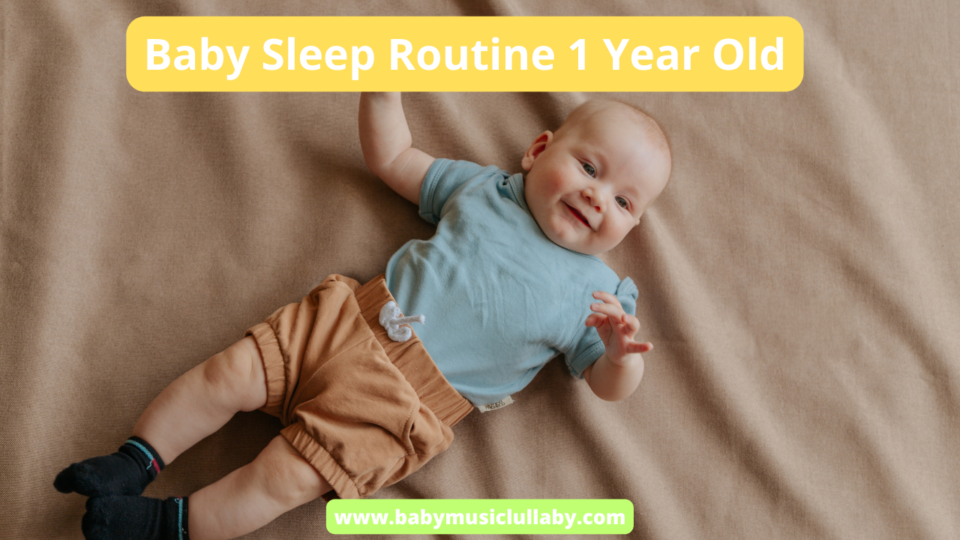Contents
Introduction
As your baby reaches the age of one, their sleep needs and patterns continue to evolve. Establishing a consistent sleep routine is crucial to ensure they get the restful sleep they need for their overall well-being and development. In this article, we will guide you through creating an effective sleep routine for your one-year-old, covering key aspects such as bedtime rituals, nap schedules, and tips for troubleshooting common sleep challenges.
1. Bedtime Rituals
Developing a soothing bedtime routine is essential in signaling to your one-year-old that it’s time to wind down and prepare for sleep. Start by engaging in calming activities such as a warm bath, followed by changing into comfortable pajamas. Incorporate activities like reading a bedtime story, gentle massage, or singing lullabies to create a relaxing atmosphere. Consistency is key, so aim to follow the same routine every night.
2. Establish a Regular Bedtime
Setting a consistent bedtime for your one-year-old helps regulate their internal clock and promotes better sleep. Most one-year-olds thrive with a bedtime between 7:00 PM and 8:00 PM, but you can adjust this based on your child’s individual needs and family schedule. Stick to the chosen bedtime consistently, even on weekends or during vacations.
3. Nap Schedule
At this age, most one-year-olds still require two naps during the day, although some may transition to one longer nap. Ensure your child has a consistent nap schedule to prevent overtiredness and ensure they are well-rested. Aim for morning and afternoon naps, each lasting around 1-2 hours, depending on your child’s individual sleep needs.
4. Create a Sleep-Conducive Environment
Designing a sleep-friendly environment plays a vital role in promoting healthy sleep for your one-year-old. Ensure the room is cool, dark, and quiet, as these conditions are conducive to quality sleep. Consider using blackout curtains, a white noise machine, or a soft nightlight to create a comforting ambiance.
5. Transition to a Crib or Toddler Bed
By the age of one, many babies have transitioned from a bassinet or a bedside sleeper to a crib. Some may even be ready for a toddler bed. Ensure that the sleeping space is safe and free from any potential hazards. Use a firm mattress, fitted sheets, and remove any pillows or stuffed animals that could pose a suffocation risk.
6. Addressing Sleep Challenges
It’s common for one-year-olds to experience sleep challenges, such as night waking or difficulty settling back to sleep. If your child wakes during the night, give them a few minutes to self-soothe before intervening. If they require comfort, provide gentle reassurance without picking them up. Establishing consistent sleep associations and gradually encouraging self-soothing can help address these challenges over time.
Frequently Asked Questions
- Q: What if my one-year-old resists bedtime or struggles to fall asleep? A: Ensure that the bedtime routine is consistent and soothing. Create a calming atmosphere, provide comfort, and establish clear expectations around sleep. If the issue persists, consult with your pediatrician for further guidance.
- Q: How long should my one-year-old nap during the day? A: Most one-year-olds benefit from 2-3 hours of daytime sleep divided into two naps. However, individual sleep needs may vary, so observe your child’s cues and adjust accordingly.
- Q: Is it normal for my one-year-old to wake up at night? A: Waking up occasionally during the night is normal for one-year-olds. However, if your child is consistently having difficulty settling back to sleep or their sleep quality is affected, consider evaluating their sleep environment and addressing any potential discomfort.
- Q: Should I wake my one-year-old from their nap to preserve bedtime sleep? A: It’s generally best to allow your one-year-old to complete their nap naturally. Interrupting their nap can lead to overtiredness and disrupt their sleep schedule.
- Q: Can I introduce a lovey or comfort object at this age? A: Around one year of age, it’s safe to introduce a small lovey or comfort object to your child’s sleep routine. Choose an item that is safe, such as a soft blanket or a stuffed animal, and ensure it does not pose any suffocation hazards.
- Q: What if my one-year-old experiences separation anxiety during sleep? A: Separation anxiety is common at this age. Provide reassurance, create a comforting sleep environment, and gradually encourage independence by allowing your child to self-soothe while offering comfort and support.

Conclusion
Establishing a consistent sleep routine for your one-year-old is essential for their overall sleep health. By implementing soothing bedtime rituals, maintaining a regular sleep schedule, creating a sleep-conducive environment, and addressing sleep challenges, you can support your child in getting the restful sleep they need for optimal development. Remember that each child is unique, so observe your little one’s cues and adapt the routine to suit their individual needs.

 Subscribe to Get Soothing Lullabies to Help Your Baby to Sleep
Subscribe to Get Soothing Lullabies to Help Your Baby to Sleep
1 comment
[…] Baby Sleep Routine 1 Year Old […]